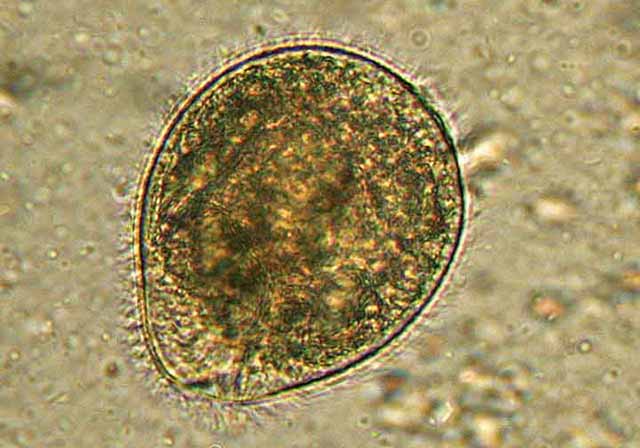There are five different groups of parasitic invaders:
Protozoa
Protozoa (“PRO-tuh-ZO-uh”)

Source
This is a large classification of parasites, making up 70% of all parasites. They are microscopic, therefore invisible to the eye, however more people around the world are killed or harmed by protozoan infections than any other type of parasitic disease. Certain protozoan through their intensely rapid reproductive ability can take over the intestinal tract of their host and from there go on to other organs and tissues. Some feed on red blood cells others produce cysts.
They are essentially found everywhere in our environment. Most are able to form a resting stage that is very resistant to temperature, chemicals, and drying. This cyst stage is usually the most infectious to man. The cysts are small and light and easily ingested. Individuals with a toxic condition, weakened immune systems, or who are under trauma or stress cannot fight off these parasites.
Many of these parasites are easily passed from person to person during their cyst stage under crowed, unsanitary conditions. Some of them are found in institutions such as orphanages, mental hospitals, daycare center, etc. Also infected food handlers should be not be overlooked as many people become infected due to the unsanitary habits of them and other cyst-passing individuals.
Different areas of the body can be affected, causing a wide variety of symptoms. Within this general grouping includes many protozoa of the genera:
Isospora: found in the intestines destroying the surface layer of cells.
Pneumocystis: infects the lungs of young children and individuals with suppressed immune systems.
Dientamoeba & Chilomastix: infects the digestive tract.
Sarcocystis: infects the muscle tissue while releasing the toxin sarcocystin.
Balantidium: invades the intestines and eventually other areas while it releases the tissue destroying enzyme hyaluronidase.
Cryptosporidium & Babesia & Retortamonas: common tissue protozoa.
Our environment contains these free-living one-celled parasites on the surface, soil, and water. These parasites are found in healthy human tissues and exist in large numbers in human cancer tissue, and tissues of those with rheumatoid diseases. Severe stress, injuries, illnesses, and weakened immune systems may precipitate diseases caused by the protozoa.
Diseases that may be associated with protozoan infections:
Asthma
Colitis
Degenerative muscle diseases
Diabetes
Elevated white blood cell count
Hodgkin’s Disease
Leukemia
Multiple Sclerosis
Ovarian cysts
Psoriasis
Pyorrhea
Cutaneous ulcers, swellings, sores, popular lesions, and itchy dermatitis can all result from protozoan invasion.
This is Part 2 of your parasite education. Go back to learn if You Could Have Parasites. To learn more, continue on to learn about Nemotoda (Roundworms), Cestoda (Tapeworms), Trematoda (Flukes) and Spirochetes. Or learn How to Treat Parasitic Infections. Download my FREE Parasites Booklet.

